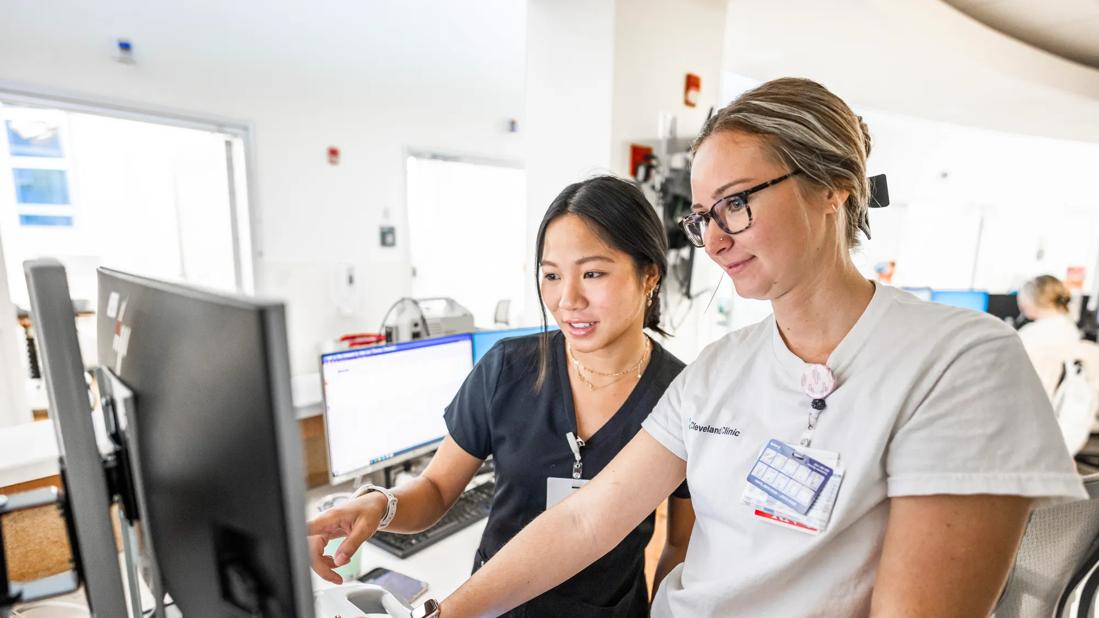Recommendations for optimizing use of this asynchronous communication tool

Timely and accurate face-to-face, telephone and pager communications are essential to facilitating critical, time-sensitive patient treatment. But what’s the best communication method for non-urgent physician communications?
Advertisement
Cleveland Clinic is a non-profit academic medical center. Advertising on our site helps support our mission. We do not endorse non-Cleveland Clinic products or services. Policy
Choosing the right method of communication is as important as the message itself. Patient safety, quality care and team coordination depend on it.
Typically, pagers have been used to communicate both critical and non-critical instances. But this model can be difficult for physicians to delineate between the two types of messages and can lead to unnecessary phone tag situations and delays.
Patrick Grady, MD, Chair of the Department of Medicine at Avon Hospital, finds that secure messaging platforms, such as Epic’s Secure Chat, enable efficient communications among the entire care team. Secure Chat is a HIPAA-compliant instant messaging technology, integrated into the EHR, and therefore easily accessible by the patient’s care team.
“The tool’s asynchronous nature means that I can send a message that does not require an immediate response so it won’t interrupt the nurse in the patient’s room. Conversations are attached to the specific patient and you can reference messages from the last 14 days. It is extremely efficient, and it affords everyone time to respond thoughtfully and accurately.”
To streamline the process of coordinating hospital admissions from the emergency department, Avon Hospital teams found a creative way to leverage Secure Chat using the ‘group chat’ feature.
Previously, the Internal Medicine hospitalist team would rotate half-day shifts carrying a pager to help them coordinate and receive patients from the emergency department (ED). This method left physicians overwhelmed by the large number of pages, which led to long call-back wait times — all while they were also trying to manage their own patient panel.
Advertisement
Dr. Grady explains, “If I was in a goals of care meeting with a patient and their family, I would come out after 45 minutes to pages regarding five new admissions. Then, as the pager holder, it was up to me to call the ED physicians and distribute the pertinent patient information to each accepting provider.”
To address this issue, a group chat was created that included the ED health unit coordinator (HUC) and all admitting providers for the day. Instead of sending a page, the HUC enters a call-back request in the chat, and the next person to accept an admission makes the call.
This new process not only reduced call-back times from 30 minutes to about 1-2 minutes, but also allowed the admitting provider to speak directly with the ED provider about the background, concerns, and treatment plan for the patient. This straightforward approach helps minimize the number of information handoffs and potential for errors.
The technology can also be leveraged to expedite discharge planning. Treatment teams at Avon Hospital use group conversations for follow-up after their Plan of Care Visit rounding. If needed, additional specialists are pulled in to discuss adjusting medications or the need for additional testing. Follow these tips to get the most out of secure messaging tools:
Advertisement
Advertisement

Automating routine medical coding tasks removes unnecessary barriers

Digital “tripwires” detect and respond to malicious activity, boosting cybersecurity maturity

Effective provider training strategies incorporate multi-modal delivery

Thoughtful collaboration, data-driven decisions and effective change management lead to significant savings

A thoughtfully designed program to elevate participants’ leadership potential

Clinical input is integral to technology implementation and adoption strategy

Advancing technology makes informatics expertise essential

Integrating technology is more than product delivery